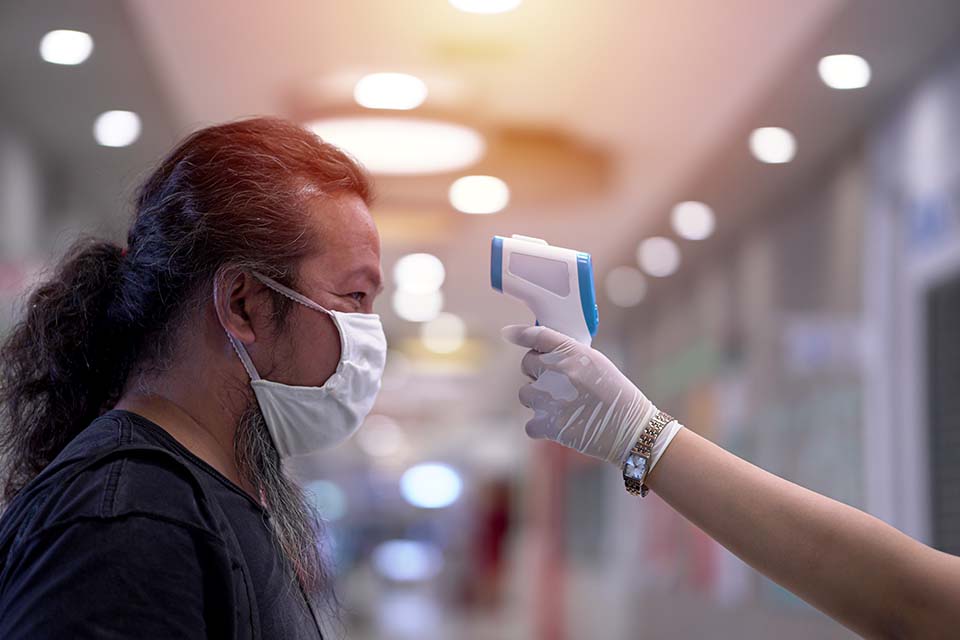
As New York is slowly entering phase 3 of its reopening plan, the state judicial system is getting ready to return to in-person operations.
In anticipation of Phase 3, hand sanitizer dispensers, plexiglass barriers, and other safety measures are being installed at courthouses throughout the city.
Apart from the basic requirements which are in effect in all courts, New York state court officials announced that all visitors would be required to submit to a body temperature check by officers at courthouse doors. Visitors with a body temperature above 100 degrees will be denied entry to the courthouse.
In a memo, New York state court officials announced that the policy would go into effect July 6 and is intended to prevent COVID-19 infections as the judiciary cautiously reopens across the state. In addition to the temperature checks, the entry test will also include questions regarding any recent symptoms or positive coronavirus test results.
Finally, a standard magnetometer and X-ray screening will take place. Only after visitors pass the body temperature test and answer all the questions accordingly will they be allowed to enter the courthouse, officials said.
“A uniformed officer shall take the visitor’s temperature by infrared thermometer without physical contact to the visitor,” the memo notes. The officer will ask whether, within the last 14 days, the visitor has had a fever, cough, shortness of breath, or any flu-like symptoms.
Also, travel within the past two weeks to states in the governor’s Executive Order 205 — which currently lists 16 states with a 10% weekly average COVID-19 positivity test rate — will also prevent entry.
As of June 30, that includes travelers returning in the past 14 days from Arizona, Arkansas, Alabama, California, Florida, Georgia, Iowa, Idaho, Louisiana, Mississippi, Nevada, North Carolina, South Carolina, Tennessee, Texas or Utah.
“If the visitor’s registered temperature is less than 100.0° F., and the visitor answers ‘no’ to the questions, the visitor shall be permitted to proceed to the magnetometer/x-ray machine,” the memo said.
However, if the visitor’s body temperature is over 100.0° F or answers “yes” to a screening question, the officer will request info such as the name of the visitors, relevant case information and the reason for their visit, although they “shall not be obligated” to give that information.
“The visitor shall then be instructed to leave the court facility immediately,” the memo states. Those incidents will be logged and reported at the end of the day.
“Everyone entering the building must be screened,” Lucian Chalfen, the spokesman for the state courts, told Law 360, granting that the new policy would likely cause long lines as attorneys, litigants, law enforcement officers, prisoners, witnesses, and vendors all wait to have the infrared thermometer pointed at their forehead before entering the courthouse.
According to Chalfen, the U.S Department of Homeland Security provided the courthouse with the $100 digital thermometers for free.
When asked if the scorching summer temperature might prevent overheated but otherwise healthy visitors from entering the courthouse, Chalfen told Law360 that the new rule will ‘include common sense’ and the officers would have the option to check the body temperature twice.
In a footnote, the memo provides for that option “if security conditions in the courthouse allow.”
The state courts also announced that starting tomorrow, courts in the Fifth Judicial District (Syracuse and surrounding counties), Sixth Judicial District (Binghamton and surrounding counties) and Seventh Judicial District (Rochester and surrounding counties) will begin Phase Four of a return to in-person operations; followed on Monday, July 6, by courts in the Fourth Judicial District (northern New York) and Eighth Judicial District (western New York).
New York City could embark “Phase Three” as soon as July 8, Chalfen noted, which would look similar to upstate’s return to in-person operations but likely “less than that” in order to control for the risk of crowding and the potential to spread the virus.




































